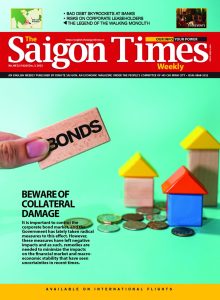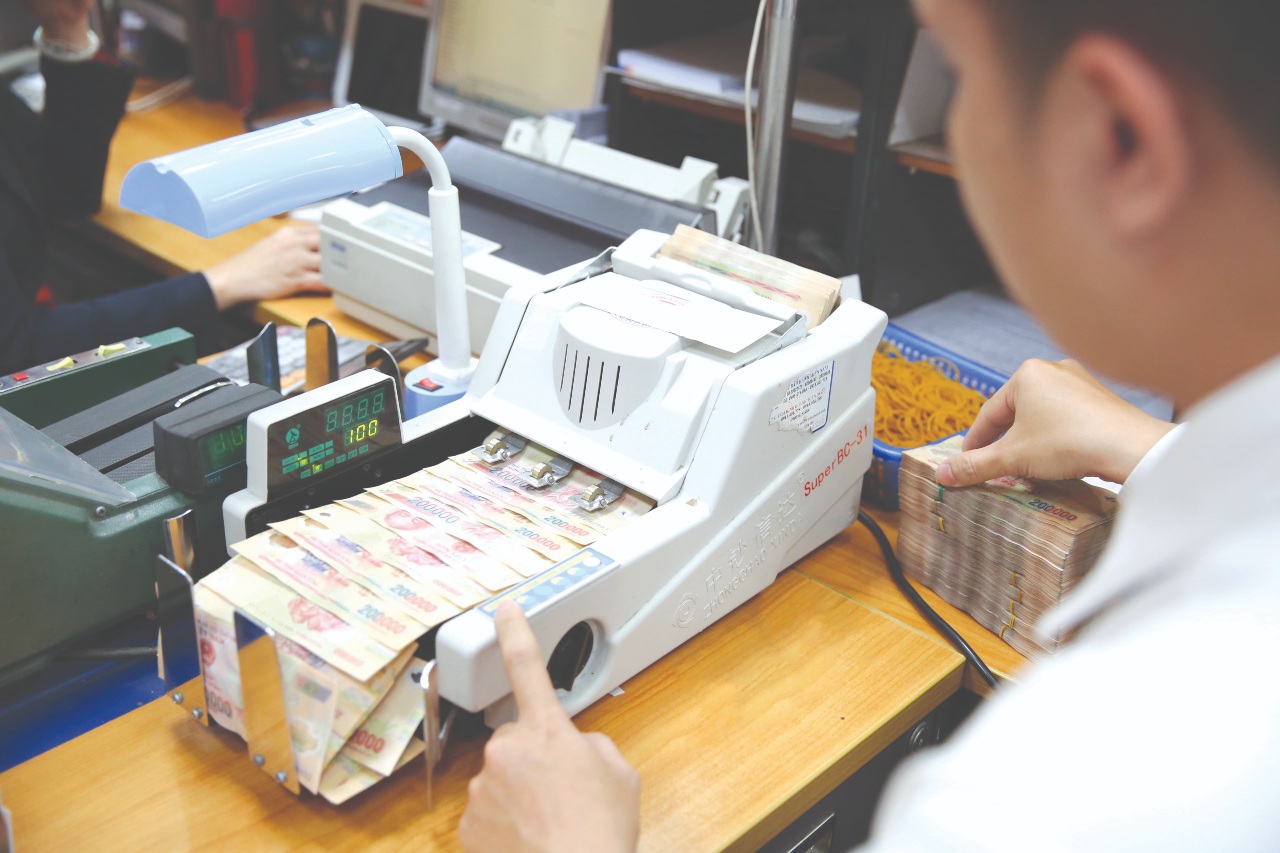The banking system is facing a decline in asset quality as bad debt has ballooned since Circular 14/2021/TT-NHNN expired. However, they can overcome the hardships if they set aside enough provisions and succeed in managing credit risk when lending to high-risk sectors.
Bad debt surges
The Covid-19 impacts, coupled with a tight monetary policy, have spelled trouble for Vietnam’s economy, especially deteriorating bank asset quality. Banks reported a strong surge in non-performing loans in the third quarter in their latest income statements that non-performing loans, resulting from the expiry of Circular 14 on June 30, which regulates debt rescheduling, exemption from or reduction of loan rates, and loan group classification for borrowers affected by Covid-19.
In specifics, financial statements from 27 banks showed that the banks’ on-balance sheet bad debt in the year through September amounted to nearly VND129.8 trillion, up 28.4% against the figure earlier this year. Of the total, potentially irrecoverable loans skyrocketed 62.5% to VND72.4 trillion, accounting for 55.8% of the total bad debt, up 11.8% over January. National Citizen Commercial Joint Stock Bank (NCB) posted a 5.3-fold increase in bad debt in late September, at over VND6.6 trillion. The bank attributed the bad debt surge to the re-classification of loans after Circular 14 expired.
Likewise, non-performing loans of Orient Commercial Joint Stock Bank doubled in the nine-month period from over VND1.3 trillion to VND2.8 trillion. Large banks such as the Joint Stock Commercial Bank for Investment and Development of Vietnam (BIDV), Joint Stock Commercial Bank for Foreign Trade of Vietnam (Vietcombank), and Asia Commercial Bank also met the same fate, with bad debt soaring 48.6%, 47%, and 44.9%, respectively. The increases led to the ratio of bad debt to total outstanding loans of the 27 banks rising to 2.36% from 1.87%, with 15 of them reporting a spike in bad debt.

Meanwhile, Saigon Thuong Tin Commercial Joint Stock Bank was the only exception, managing to keep the bad debt ratio under 1%. It posted a fall in bad debt in its income statement for the third quarter, with the non-performing loans dropping 34% over January, at nearly VND3.8 trillion. Its ratio of bad debt to total outstanding loans ebbed to 0.9% by the end of the third quarter from 1.47% early this year. Earlier, the bank sold some VND20 trillion to the Vietnam Asset Management Company (VAMC), with some of it sold in the form of bonds and others at the market price. The bank leaders said it is accelerating the settlement of the bonds.
Keeping money for rainy days
Figures from financial statements in the third quarter show that 14 out of 27 banks continued raising their loan loss coverage ratio (LLCR) in nine months, while the rest cut down on such provisions.
Though the LLCR of Vietcombank dropped sharply, compared to January, it still took the lead among banks with the highest LLCR, at 402%. To put it another way, Vietcombank has set aside VND4.02 for every Vietnamese dong in bad debt. Vietnam Joint Stock Commercial Bank for Industry and Trade also raised its provisions for bad debt to 250% by late September, up 70% compared to late 2021. BIDV, Military Commercial Joint Stock Bank, and Bac A Commercial Joint Stock Bank respectively hiked their LLCR to 214%, 208%, and 190%. Ten among 27 commercial banks have increased the LLCR to over 100%, meaning their business performance would not be affected even when bad debt becomes irrecoverable.
Besides, a high LLCR enables banks to carry out a more flexible approach when they decide to cut or reverse provisions, to stimulate growth, and to handle non-performing loans in the following years while avoiding deterioration in bank asset quality.
However, not all banks make provisions for bad debt with as much money. Statistics showed 10 out of the 27 banks have the LLCR lower than 60%, such as NCB. Its LLCR only stood at 14%, equivalent to VND0.14 for every Vietnamese dong in bad debt. Meanwhile, LLCR of Vietnam Thuong Tin Commercial Joint Stock Bank, Bao Viet Joint Stock Commercial Bank, Petrolimex Group Commercial Joint Stock Bank and Saigon Bank for Industry and Trade hovered around 50%.
Many banks are rushing to sell collateral to accelerate the handling of unpaid debts. Some of them even offered a big discount for the assets under the current economic climate, with 16 banks having sold debt and collateral worth some VND32 trillion via the debt exchange of VAMC.
VNDirect Securities company said in its report that liquidity of the banking system had improved, with 20 commercial banks having met the Basel II standards, despite the business environment turning sour. Some banks even went for the Basel III standards, which set out stricter requirements for risk management and operational efficiency. With a firm foundation, the country’s banking sector is expected to overcome the challenges and turbulence, thereby achieving an optimistic outcome in 2022, and be able to stand against headwinds next year.









